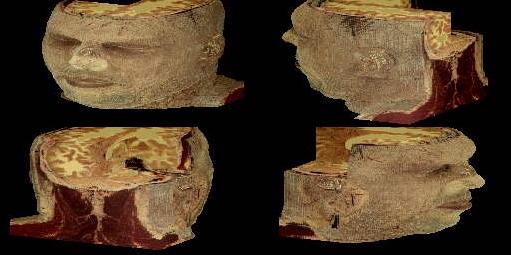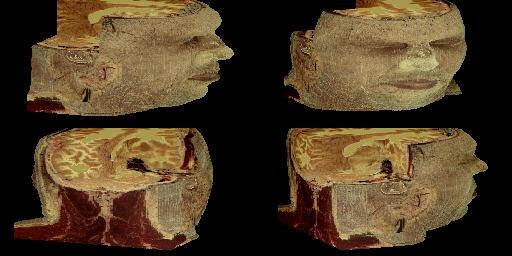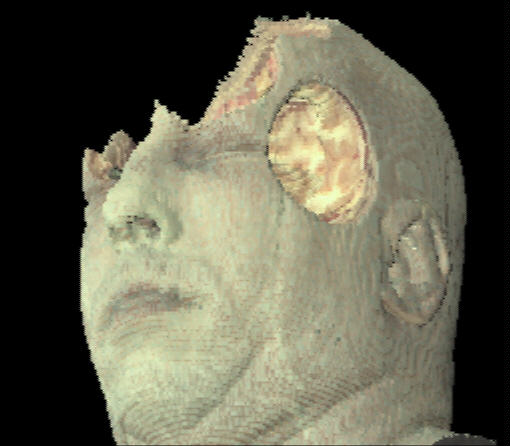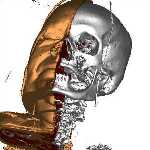NOTICE! This information is mostly OLD,
In 1996 I worked at the Digital Media Institute as a research assistant. My area should have been user interfaces (or something), but I got interested in the medical imaging area. We had the data of a sliced man there and I was programming some software to visualize it in 3D. I did some examples with PC using (of course) pure assembler. Later the routines have been ported to C++ for portability and other issues.
I was working with a reduced 24bit dataset, which contained only the head, scaled down to half or so. The reason for that is the amount of memory the set takes. The reduced head takes 24MB space, so you can guess how much the whole man will take without scaling. There is also a dataset of a woman which takes about 48GB! You can just guess how much that much disk space would have costed in 1996...
Nowadays I use 16bit CD & MRI data of the woman for development and there are quite many enhancements on the way when I have the time. More will be told sometime in the future at our company's website http://www.iqs.fi/.





The first two are pictures of the man. The head dataset takes about 350MB space, and it is 24bit truecolor, of course, but for these pictures I have used a reduced dataset which is only 24MB. The latter three images are from a newer version of Trevor, and they include Phong shading and some other nice things.
The pictures are drawn 'realtime', so you DON'T have to wait for the machine to finish rendering the picture for long. The routine can draw a picture in about 2-3 seconds on a 100MHz Pentium. The routine uses 'only' about 42MB of memory, which is mostly taken up by the 24MB dataset (which requires also 8MB of additional space in memory). If you want more information of this routine, please read the OLD Trevor Technical Documentation. (This was all in 1996).
 [Test 1]
[Test 1]These pictures were rendered with a newer version of Trevor. It's a shame that I haven't had the time to develop this earlier, the quality of the images is quite superior to many other volume renderers. There are no blocky surfaces like in so many other pictures.
More info will be added somewere sometime somehow.